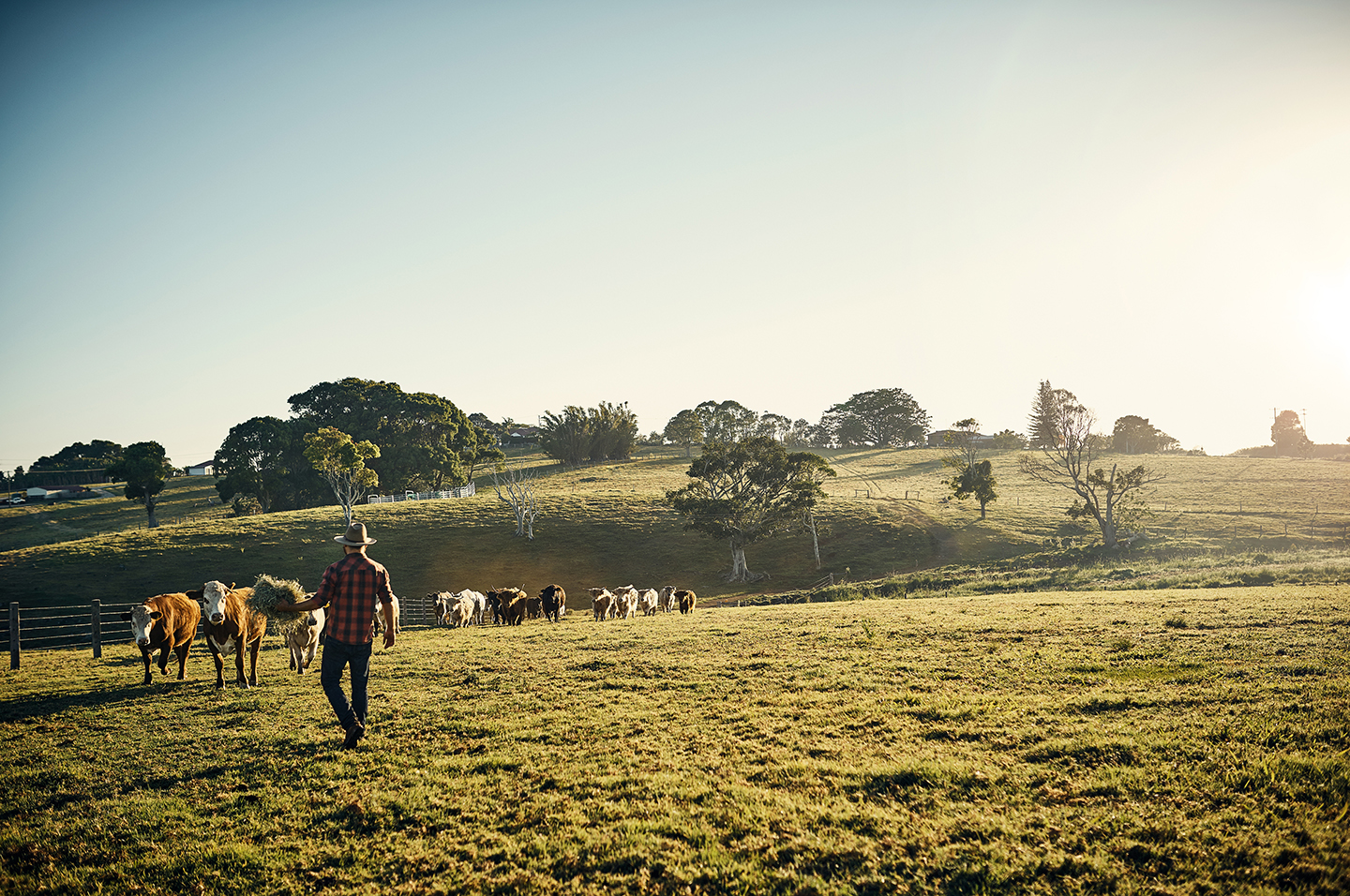Discover the benefits of carbon farming
Carbon farming provides opportunities to address climate change and be paid.
Carbon farming is managing land to reduce carbon in the atmosphere. This can be achieved by either:
- storing carbon in soil and vegetation (sequestration)
- avoiding greenhouse gases being released in the first place (emissions avoidance).
The type of carbon farming activity that is right for you will depend on a number of factors, including your location, climate conditions, farm or property type, and management goals. Carbon farming activities can include:
- planting trees
- creating conditions to let vegetation re-generate (such as through fencing)
- changing grazing patterns and herd management
- changing manure management
- changing soil management
- changing how fertiliser is used.
Carbon farming is an essential part of taking action on climate change. Storing carbon in plants and soil is one of the most cost-effective means of removing carbon from the atmosphere. This removal will be needed alongside emissions reduction activities to avoid the most severe impacts of climate change.
To successfully manage carbon on your land, you will first need to understand the different sources and sinks of carbon. Fertiliser, fire, livestock, decomposition and manure are all sources of carbon emissions. Carbon can be stored in vegetation, soil and ‘blue carbon’ (marine and coastal) ecosystems (carbon sinks).

Figure 1: Simplified overview of emissions sources and sinks in the primary industries and land sector
Carbon farming can generate income by creating carbon credits
Carbon farming activities can be used to create Australian Carbon Credit Units (ACCUs). To generate carbon credits, projects must be new and additional to activities you are already doing. If you are planning to create carbon credits, it is important to check the Australian Carbon Credit Unit Scheme rules before starting any carbon farming activities.
What is a carbon credit?
One carbon credit is equal to 1 tonne of carbon dioxide equivalent (CO2e) sequestered or avoided by the project.
The carbon credits generated from Australian Carbon Credit Unit Scheme projects are called Australian Carbon Credit Units (ACCUs) and can be sold to individuals, organisations or governments wanting to offset their carbon emissions.
Carbon farming can boost productivity and bring other benefits
Farmers and primary producers can benefit from a range of additional outcomes associated with carbon projects, known as co-benefits. This includes environmental benefits, such as enhanced biodiversity, economic gains from increased productivity, increased community resilience, and Aboriginal cultural co-benefits.
Co-benefits
Increasing soil carbon can improve on-farm productivity through:
- increased soil fertility, which may lead to increased plant health, growth, vigour and yields, and also reduced costs such as synthetic fertilisers
- improvements to soil structure, which can provide buffering against the effects of drought and protection against erosion.
- Productivity gains can also be linked to increasing vegetation. Increased shelter for livestock can improve health and production, and vegetation can act as a windbreak and reduce impacts of erosion.
The impacts on productivity will depend on the type of carbon project and the specifics of your farm, such as location, climate, enterprise type and more.
Increased resilience and income for farmers can lead to more resilient and thriving regional communities.
Carbon farming can build ecological, economic, social and community resilience by:
- diversifying land uses and income streams
- improving water-holding capacity of soils, enabling landholders to better survive and recover from drought
- improving protection for stock through shade and windbreaks.
We must increase and protect biodiversity and nature to support the healthy ecosystems on which all life on earth depends. Carbon farming can improve biodiversity by restoring and enhancing vegetation and improving soil health.
The NSW government offers additional support to farmers to improve biodiversity through the Biodiversity Conservation Trust.
Businesses increasingly see value in measuring and offsetting the carbon impact of their operations and products. Some producers already receive a premium price for carbon neutral products. Consumer demand will play an important role in providing a price signal for carbon neutral products.
Climate Active is an Australian Government initiative which aims to drive voluntary climate action through its Climate Active Carbon Neutral Standard or certification.
Natural capital refers to the natural assets, processes and cycles support human life. These include:
- the rocks and soil and the cycling of nutrients for plant growth
- our streams, rivers and oceans, their role in providing fresh water, healthy marine environments and how they help regulate global weather
- the quality of the air we breathe.
The NSW Government's Natural Capital Statement of Intent recognises the multiple benefits that natural assets on private land can bring. It proposes a partnership between the NSW Government and farmers and landowners to manage all aspects of their land for economic and environmental outcomes.
Carbon projects have the potential to strengthen Aboriginal cultural outcomes. Landholders can support cultural outcomes by engaging Traditional Custodians including Elders and Knowledge holders to deliver services directly to the proposed carbon project. You can:
- engage Traditional Knowledge holders to ‘Walk Country’ with you. Walking Country with an expert knowledge holder can reveal culturally significant plants, animals and places in your local area or on your land and additional benefits the project can bring. Walking Country can be an opportunity to learn about your farm and support biodiversity while maintaining farm productivity.
- work with local Aboriginal organisations to discuss ways the carbon project might provide local employment for seed harvesting, propagation, planting, monitoring, and/or site maintenance.
- learn about the history of the landscape and traditional management practices.
Find out more about carbon and Culture.
Contact us
You can contact us by email at [email protected].

